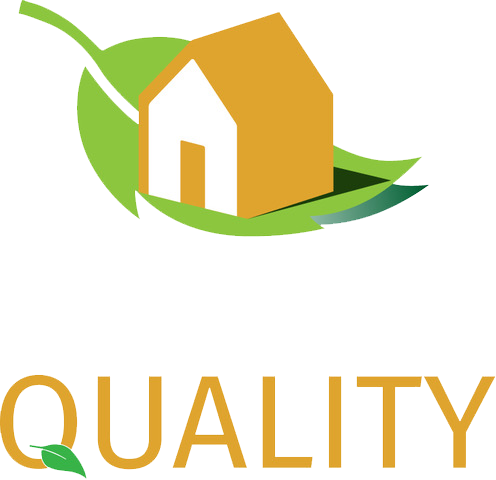Guidance and Certifications for Commercial developments in the UK
As countries around the world race to meet the net zero carbon objective by 2050, there is no shortage of green building certifications to ensure compliance with increasingly stringent limits on carbon emissions. Many of these certifications are recognised globally, while others are only used in a handful of countries; here, we’ll have a look at the most well-known building certifications which are recognised globally as well as in the UK.
LEED
Leadership in Energy and Environmental Design (LEED) is a globally recognised, voluntary green building certification programme which was developed by the United States Green Building Council (USGBC).
A point-based system, LEED evaluates the energy efficiency of buildings by giving them points in different key areas, from sustainable site development to materials used, innovation in design and the use of renewable energy sources, to name just a few. Based on their performance overall, buildings can attain different levels of certification: Certified, Silver, Gold and Platinum, with the latter serving as the highest level attainable.
BREEAM
Building Research Establishment Environmental Assessment Method (BREEAM) is a globally recognised standard for assessing the environmental performance of buildings, developed by the Building Research Establishment (BRE) in the UK.
Similar to LEED, BREEAM is a voluntary programme and the certification is based on a scoring system that evaluates buildings in key areas such as energy and water use, materials, land use, and health and well-being. Buildings earn points in each of these categories based on their performance. The different levels a building can achieve within the BREEAM certification framework are Pass, Good, Very Good, Excellent, and Outstanding.
RESET
Regenerative Ecological Social and Economic Targets (RESET) is a building standard developed by the International Living Future Institute (ILFI). It is a performance-based certification system with a particular focus on indoor air quality, occupant health and comfort, and building operations. The certification is based on real-time monitoring of indoor air quality (IAQ) parameters and comes with requirements for the management of building operations and maintenance – such as the implementation of strategies for the reduction of waste.
WELL
The WELL Building Standard is a globally respected building certification programme developed by the International WELL Building Institute (IWBI). It focuses on promoting health and well-being in building design and operation. WELL evaluates buildings across various areas including air quality, water, nourishment, light, comfort, and more. Buildings earn points in each of these categories, and depending on the overall performance they can achieve one of three levels: Silver, Gold, or Platinum.
SmartScore
SmartScore is a building rating system developed by WiredScore, a US company that evaluates and certifies the internet connectivity and technological infrastructure of commercial and residential buildings.
SmartScore recognises and promotes technologically advanced smart buildings, with a scoring system based on a simple 100-point scale; the higher the number, the better the performance.
In early 2022, an alignment between SmartScore certification and the WELL Certification was announced, with the two programmes working together to achieve the shared goal of “supporting enhanced human health, wellbeing and performance within the built environment using digital technologies”. It is mainly used in the US, the EU, the UK, and Asia-Pacific area.
LBC
Living Building Challenge (LBC) is a building certification program developed by the International Living Future Institute (ILFI) to promote sustainable and regenerative building practices. The areas evaluated by LBC – also known as ‘petals’ because buildings should ideally be “efficient as a flower” are:
- Place
- Water
- Energy
- Health and Happiness
- Materials
- Equity
- and Beauty
Each has a subset of imperatives with 20 stipulated in total. LBC certification is available in two tiers: Living Building Challenge, which requires buildings to meet all of the programme’s 20 imperatives, and Petal Certification for buildings which meet the imperatives in a subset of the petals.
Fitwel
Developed by the U.S. Centre for Disease Control and Prevention (CDC) and the General Services Administration (GSA), Fitwel is another building certification programme which focuses on promoting health and wellbeing in building design and operation. As well as promoting the use of environmentally friendly materials and renewable energy sources, the programme assigns points through the evaluations of several key areas – for example, outdoor spaces and indoor environment.
Energy Star
Created by the U.S. Environmental Protection Agency (EPA) to promote energy efficiency in buildings and products, Energy Star was established in 1992 and has since been used worldwide. It has become a leading programme to assess and rate the energy performance of all types of buildings.
The Energy Star programme rates buildings through a comparison of their energy performance against that of similar buildings or products, based on the building’s energy use intensity (EUI) or energy performance score (EPS). To earn an Energy Star certification, buildings need to meet stringent energy efficiency standards.
BOMA BEST
BOMA BEST (Building Environmental Standards) is a national building certification programme to assess and recognise buildings for their environmental performance and sustainability. Developed by the Building Owners and Managers Association (BOMA) of Canada, it is widely used in the country, as well as globally.
Available in four levels – from Bronze to Platinum – it assigns points to buildings based on their performance in factors such as energy and water use, waste management and emissions. In order to earn certification, buildings must achieve a minimum score in each of the assessment categories.
DGNB
The Deutsche Gesellschaft für Nachhaltiges Bauen, or German Sustainable Building Council (DGNB), is a building certification system and sustainability standard that was developed in Germany to assess buildings and building projects. It is based on sustainability performance across six categories:
- Environmental quality
- Economic quality
- Sociocultural and functional quality
- Technical quality
- Process quality and
- Location quality
Each of these areas is divided in several subcategories with specific criteria that the building must meet in order to be certified. Depending on the total score, the certification comes in four levels, once again ranging from Bronze to Platinum.
NABERS
The National Australian Built Environment Rating System (NABERS) is an Australian building certification program, developed by the Australian government in collaboration with industry stakeholders to promote sustainability in the built environment. It rates buildings’ environmental performance on a scale of one to six stars. Widely used in Australia, it has since been used in New Zealand as well as in the UK.
Tags: building certification, commercial developments,
How Can Sustain Quality Help My Organisation?
When an organisation turns to us at Sustain Quality, they gain access to a team of professionals that are dedicated to providing services that help save on energy costs.
Sustainability consultants are incredibly knowledgeable in the steps that need to be taken to create net-zero buildings for organisations of all sizes.
Some of the assessments that may be used to best determine how you can meet net-zero energy include:
A net-zero building is the epitome of a high-quality building and property organisation. Our dedicated team offers sustainability consulting Nationwide that will help you achieve your sustainability goals.
We can help your organisation reduce carbon emissions and meet other environmental initiatives.





